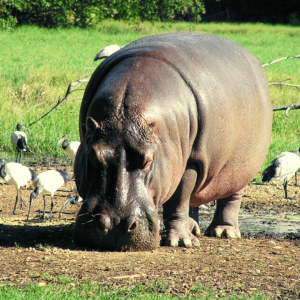Wouldn’t it be nice if you could put your money somewhere, forget about it, and come back later to discover it multiplied all on it’s own.
Well, that’s not the stuff of fairytales. With two key ingredients, your money will make new monies all on its own.
Growing your money requires some labor from old Father Time and utilizing the wonderful concept of compound interest.
Introductions first. Compound interest is unicorn math magic that helps the money in your savings or retirement account grow.
Maybe better explained by an example.
MATH TIME IS FUN TIME

Let’s say we have a box of donuts, and the box gets bigger every month by 10%. So, 12 donuts become 13.2 (12 x .1 = 1.2; add 1.2 to 12).
Now we have 13.2 donuts. The next month, it grows by another 10%. The (now stale) 13.2 donuts become 14.52 donuts (1.32 + 13.2). The 10% growth rate is our interest rate. The overall donut growth, though, is NOT 10%, thanks to our friend compound interest.
Let’s calculate our donut growth. We started with 12 donuts. We finished the 2 months with 14.52 donuts. MORE MATHS 😃
How many donuts did we gain? 14.52-12 = 2.52 donuts
What’s the percent gain? 2.52/12 *100 = 21%
So although our interest rate was 10%, we actually made a 21% donut gain.
Just to make my point, let’s swap donuts for dollars. Trisha puts $100 from her paycheck into a certificate of deposit (nicknamed CD for short) account every month. (Like one listed here.) The account offers a 2.5% yearly interest rate, compounded monthly.
After a year, Trisha earns a cool $1,216 (rounded). You can calculate that here.
If she had just put $100 in the bank every month and left it alone, she’d have $1200 (12 months x $100). Now $16 extra dollars doesn’t sound like a big deal.
However, if she did this for 5 years, she’d end up with about $6,400. If she did it for 10 years, it’d total around $13,645.
Without compound interest, she’d only have $6,000 after 5 years or $12,000 after 10 years.
Main takeaway? The longer we let compound interest do its thing, the bigger the gains.
Summary: Stale donuts are gross. But if our donuts were dollars, then ok, compound interest is alright.
Cool, but how do I do this?
A lot of people first experience compound interest in their savings account at the bank. Most saving accounts offer .01%-1.5% yearly interest. Not to be a downer, but at the current ~2% rate of inflation, that means any money chilling in the bank is decreasing in value in the long run.
Simple ways to think about inflation are everyday consumer items. Hershey bars used to be 15 cents in the 1970s. Now they’re around $1. Going to the movies in 1975 used to cost around $2. Now it costs around $9.
The point: Prices of goods and services are always on the up. So if you keep all your money in a shoebox or in a low interest-rate savings account, your money is in a losing race against inflation.
But no need to start hoarding all your cash and frantically looking for get-rich-quick money schemes. All you need is a smart investing approach that lets your money grow at rates higher than inflation.
Compound Interest & Inflation RECAP
Compound interest helps money grow faster, whether it’s sitting in a bank account or invested in stocks. No go if it’s sitting in your wallet or under a floorboard, though.
Inflation: When general price levels go up for good and services. And a reason why you don’t want to let all your money chill in a savings account at the bank.



